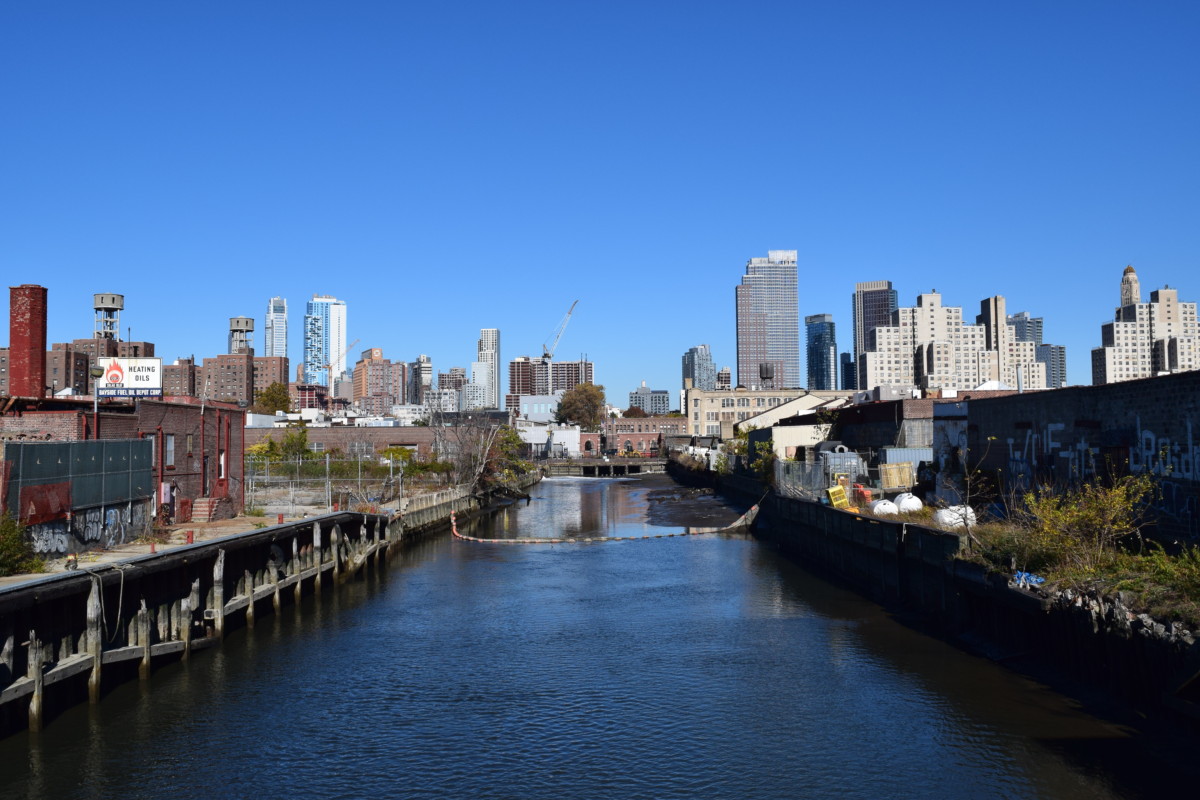 Stephan von Muehlan came to Gowanus ten years ago. He is a designer, builder and visual artist, and his first art project in the neighborhood involved converting an abandoned boat into an art space on the Gowanus canal. But back then, the neighborhood was just a sleepy, underutilized industrial space. “Cops would come around and they would say, ‘What are you doing here? People only come here for drugs and hookers’,” he said.
Stephan von Muehlan came to Gowanus ten years ago. He is a designer, builder and visual artist, and his first art project in the neighborhood involved converting an abandoned boat into an art space on the Gowanus canal. But back then, the neighborhood was just a sleepy, underutilized industrial space. “Cops would come around and they would say, ‘What are you doing here? People only come here for drugs and hookers’,” he said.
But a lot has changed since then. Gowanus has been seeing an increased influx of families and residential spaces. Undeterred even by the noxious canal that runs through the neighborhood, real estate developers are converging on it, and high-rise buildings with luxury condominiums are sprouting beside single-storied industrial warehouses.
However, this development is taking a toll on the artist community. Over the last year, there have been numerous incidents of artists being evicted from their studios in Gowanus. The most conspicuous incident happened last fall when three buildings on the corner of 9th street and 2nd avenue changed hands. The new developer decided to convert the buildings into a more mixed-use type of space, as a result of which hundreds of artists lost their studios.
“Last summer we all got leases that ended on Oct. 1,” said Karen Schiff, a visual artist, who had had a studio in one of those buildings since 2011. “They told us that we’d be able to stay for a year beyond that but, well, that didn’t happen.”
Schiff had to vacate her studio this September, but she said that she had been luckier than most artists—some of them had got direct notices to vacate.
According to a New York Times analysis, home prices in Gowanus have increased 56% in the last five years. A report by Zumper, a rental-listing company, shows that Gowanus, along with Greenpoint, saw the highest rent increase in 2015. As rents rise, affordable studio spaces are becoming harder to find.
Gowanus has always been zoned primarily for light manufacturing industries. These zoning laws attracted artists, made the neighborhood affordable, and discouraged developers. “And it was also kind of protected by the fact that in the middle of it was the most polluted body of water in America,” said von Muehlan. “Between the zoning and the pollution, it kept the market forces, and the gentrification on both sides of it, a couple of blocks away.”

But in the last few years, certain areas of the neighborhood have been rezoned in an effort to make the neighborhood available for more mixed use. So, areas that were previously reserved for manufacturing use only are being converted to include commercial and/or residential spaces. In 2013, Whole Foods opened on 3rd avenue in Gowanus, the first in Brooklyn. Von Muehlan says that was the biggest, most obvious indicator of gentrification.
For one thing, rezoning means that landowners have more choices when it comes to choosing tenants. Von Muehlan, who has had at least half a dozen landlords in Brooklyn, says that given the option, landlords would generally prefer residential tenants over artists. “I mean, here we are in a one-story building with a leaky roof, where we’re paying a reasonable rent for a small business to get started,” he said. “But if you could replace that with a $150 million building project with hundreds of units worth millions of dollar each, there’s no competition then.”
The pace of change could quicken, too. On Oct. 27, the City kicked off its Gowanus Neighborhood Planning study which could lead to rezoning of the entire neighborhood to make space for more residential units. Gowanus is one of the eight neighborhoods that the city is studying for future rezoning. According to artists, this rezoning will be critical in deciding their future in the neighborhood.
David Barthold, a painter and graphic artist, lives in Park Slope and has been working in Gowanus for the past 20 years. He says that artists come to Gowanus because they like the kind of industrial wasteland that Gowanus has in abundance. “The whole thing about artists is that we depend on cheap dirty land where we’re not going to bother anybody,” Barthold said. “But once the cheap dirty land dries up it’s harder and harder to be an artist.”
According to artists, the neighborhood is becoming a place where people hang out instead of being just a place where they work. Atom Cianfarani, a visual artist and sustainability enthusiast, says that when she came to Gowanus more than a decade ago, she never saw people on the streets. “But now, there are people all over the place all the time, walking with their baby strollers and stuff,” she said.
Meanwhile more cafes, restaurants, and bars are popping up in Gowanus. And while Von Muehlan doesn’t have a problem with these businesses, he says that if they continue growing, artists like him will probably be pushed out.
Von Muehlan is confident his lease will be extended the next time it’s due. But he isn’t too sure about the time after that. Decent landlords are the only people who can keep artists in Gowanus, he says.
Beyond that, “Ideally, I would like to see some sort of collaboration between arts organizations, developers, the old generation of decent landlords, and the city to protect artists in Gowanus,” he said.


Leave a Reply